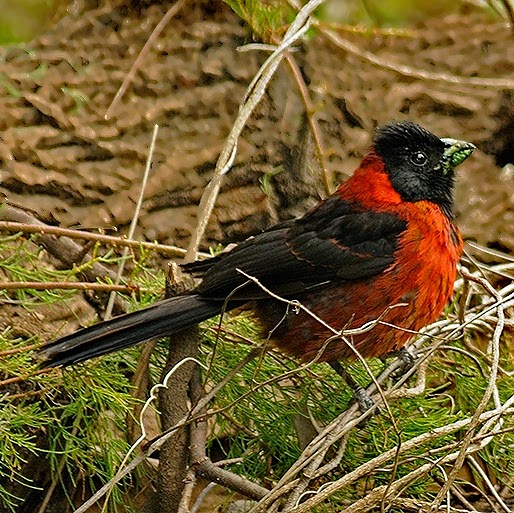| Photo by Lew Scharpf (PBase) |
Common name:
crimson-collared grosbeak (en); bico-grosso-de-coleira (pt); cardinal à collier (fr); picogrueso cuellirrufo (es); halsbandkardinal (de)
Taxonomy:
Order Passeriformes
Family Cardinalidae
Range:
This species is endemic to eastern Mexico, being found from Nuevo Léon to northern Vera Cruz and north-eastern Puebla.
Size:
These birds 21-22 cm long and weigh about 60 g.
Habitat:
The crimson-collared grosbeak is mostly found in dry tropical forests and scrublands, also using humid forests, second growths, citrus groves and sweet gums stands.
Diet:
They feed on leaves, seeds and berries, also taking some insects.
Breeding:
These birds may breed in May-July. The nest is a loosely built cup made of twigs and grass, and lined with finer materials, placed in a scrub, tangled vine or small tree up to 2 m above the ground. The female lays 2-3 light blue-grey eggs with brown flecks, which she incubates alone for 11-13 days. There is no information regarding the fledging period.
Conservation:
IUCN status – LC (Least Concern)
This species has a large breeding range and the global population is estimated at 20.000-50.000 individuals. Although there in no information on population trends, the crimson-collared grosbeak appears to adapt to some altered habitats, making less vulnerable to habitat changes than other species.

